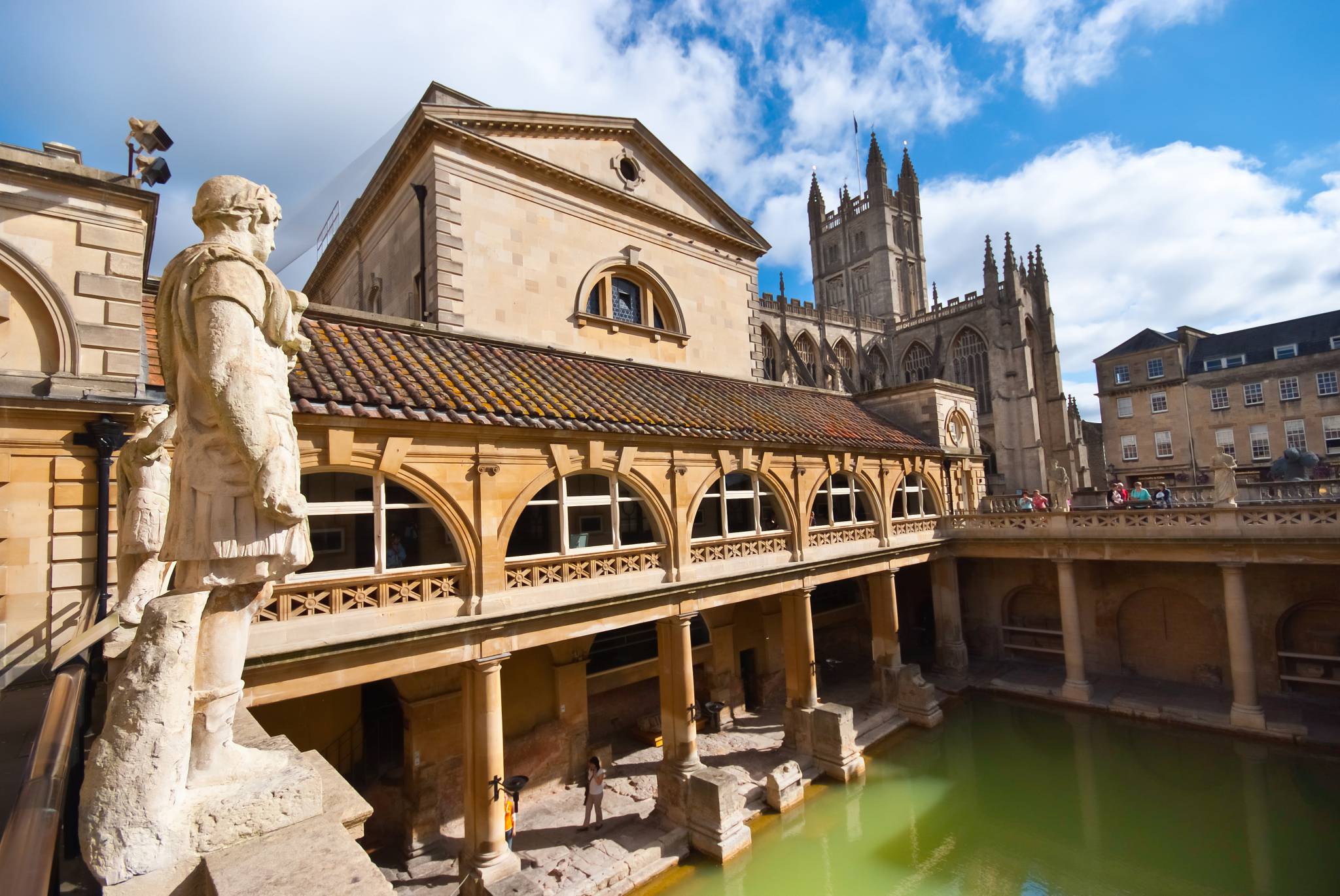From the grandest Georgian architecture to the world's best-preserved Roman bathhouses, it comes to no surprise why Bath has been drawing crowds for more than 2,000 years. Founded on top of a natural hot springs, this architecturally sophisticated city came to be during the 18th century. Thanks to father and son architects John Wood the Elder and Younger, who founded slinky landmarks such as the Circus and Royal Crescent. Download the Bath Travel Guide and Offline Map and experience this wondrous city for yourself.
1. Roman Baths
Considered as the world's most well preserved Roman bath that was constructed above the city's three natural hot springs. Emerging at 46 degrees celcious it is situated alongside the temple dedicated to the healing goddess Sulis-Minerva. But it isn't just the goddess' temple that is within arm's reach from the Roman spa. In fact, 18th to 19th century buildings surround it. Expect throngs of tourist out and about in the baths so try and avoid weekends as much as possible.
2. Royal Crescent
Asides from the great Roman Baths, Bath is also famed for its outstanding Georgian architecture. And it doesn't get any grander than the semicircular terrace of townhouses of Royal Crescent. And as if it can get no more majestic than it already is, it overlooks the green sweep of Royal Victoria Park. Design by John Wood the Younger and built between 1767 to 1775, the houses are perfectly symmetrical from the outside giving it it's architectural charm.
3. Prior Park
The estate was established by the entrepreneur Ralph Allen and partly designed the landscape architect Capability Brown. The grand estate today is occupied by a private school, but the several lovely pathways around it are open to the public. This includes the Bath Skyline, a 6-mile circular trail offering wondrous views. It also features cascading lakes and a graceful Palladin bridge, which is notably one of only four such structures in the world.
Learn more about other destinations that offer unique experiences by checking out eTips.




